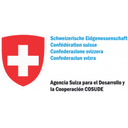Executive Secretary

10th International Scientific Conference on Agricultural Development and SustainabilityAGROCENTRO 2023
Agrocentro 2021
Abstract
Rust is a foliar disease that decreases agricultural yield in common beans. The present work was carried out with the objective of evaluating the varietal response and the effect of the chemical treatment on the incidence, severity and morphophysiological and agronomic indicators in commercial cultivars of common bean. It was developed at the “Liberación de Remedios” Agricultural Farm in the Remedios municipality, in the period between December 2018 and April 2019. Seeds with basic category of cultivars 'Guama-23', 'Cuba C 25-9R' were used, 'Delicias 364' and 'CIAP-24'. The response of common bean cultivars to the disease was determined. In the cultivars with a susceptible and moderately susceptible response, the effect of chemical treatment against rust on morphophysiological and productive indicators of the evaluated cultivars was evaluated. The results showed that differences were found in the varietal response to U. appendiculatus. The cultivar 'Guamá 23̔ had a resistance response due to hypersensitivity, presenting necrotic spots without reaching sporulation, while' Delicias 364 'and' Cuba C 25-9-R 'presented susceptibility to the natural infection of the pathogen, and' CIAP -24 'was moderately susceptible. In cultivars with a susceptible response and moderate resistance to rust, the chemical treatment based on the application of calcium hydrate (3 kg ha-1) plus Opera® (0.7 L ha-1) decreased the incidence and severity of U appendiculatus, with an increase in the morphophysiological and productive indicators of the evaluated cultivars.
Resumen
La roya es una enfermedad foliar que disminuye el rendimiento agrícola en el frijol común. El presente trabajo se realizó con el objetivo de evaluar la respuesta varietal y el efecto del tratamiento químico sobre la incidencia, severidad de la roya e indicadores morfofisiológicos y agronómicos en cultivares comerciales de frijol común. Se desarrolló en la Granja Agropecuaria “Liberación de Remedios” del municipio Remedios, en el período comprendido entre diciembre de 2018 y abril de 2019. Se utilizaron semillas con categoría básica de los cultivares ‘Guama-23’, ‘Cuba C 25-9R’, ‘Delicias 364’ y ‘CIAP-24’. Se determinó la respuesta de cultivares de frijol común ante la enfermedad. En los cultivares con respuesta susceptible y moderadamente susceptible se evaluó el efecto del tratamiento químico contra la roya sobre indicadores morfofisiológicos y productivos de los cultivares evaluados. Los resultados mostraron que se encontraron diferencias en la respuesta varietal ante U. appendiculatus. El cultivar ‘Guamá 23̔ tuvo una respuesta de resistencia por hipersensibilidad, al presentar manchas necróticas sin llegar a la esporulación, mientras ‘Delicias 364’ y ‘Cuba C 25-9-R’ presentaron susceptibilidad a la infección natural del patógeno, y ‘CIAP-24’ fue moderadamente susceptible. En los cultivares con respuesta susceptible y resistencia moderada a la roya, el tratamiento químico a base de la aplicación hidrato de calcio (3 kg ha-1) más Opera® (0,7 L ha-1) disminuyó la incidencia y severidad de U. appendiculatus, con un aumento de los indicadores morfofisiológicos y productivos de los cultivares evaluados.
About The Speaker

Dr. C. Silvio de Jesús Martínez Medina

